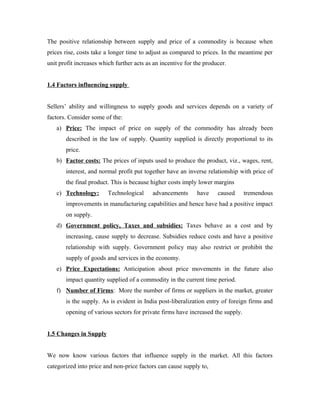This document discusses the concept of supply in economics. It defines supply as the willingness and ability to sell goods at particular prices over time. The law of supply states that, all else equal, quantity supplied increases with price. Supply is influenced by factors like price, costs of inputs, technology, government policy, and more. Changes in supply can occur through shifts or movements along the supply curve. Elasticity of supply measures the responsiveness of quantity supplied to changes in factors like price. More idle capacity, stock levels, and flexibility of production make supply more elastic in the long-run than the short-run.









